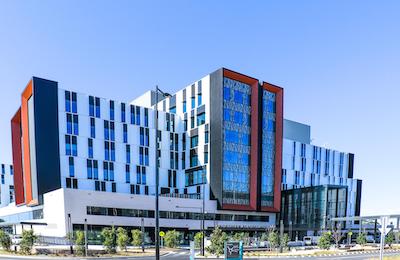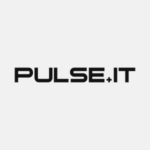Sydney’s Northern Beaches Hospital went live with DXC Technology’s MedChart electronic medication management system in March, using a patient-centric approach that saw all wards and departments swapping from paper to digital in just 11 days at the height of the coronavirus pandemic.
eMeds is the culmination of close to 16 months of digital implementations since the hospital’s somewhat troubled opening, including optimising the Telstra Health electronic medical record, building a health information exchange with the Cerner EMR used in other hospitals in the local health district and eHealth NSW’s HealtheNet system, and implementing the MOSAIQ oncology management system.
The hospital project team says the eMeds program has been a success for a number of reasons, not the least of which is the patient-centric approach borrowed from Blacktown Hospital, as well as a strong clinician engagement and user adoption program and managing to recruit people with previous experience and skills.
This includes NBH’s project lead Patricia Liebke, who oversaw the awarding of HIMSS level 7 to Australia’s first digital hospital, St Stephen’s at Hervey Bay, as well as Healthscope clinical applications specialist Kate Richardson, who was involved in the roll out of MedChart at St Vincent’s Hospital back in 2005.
The NBH project also involved building integrations between MedChart and the Telstra Health EMR, which is a rebuilt and modernised version of the system originally developed at St Vincent’s.
The actual planning and preparation for eMeds began back in early 2019 and the hospital was on track to go live with the new system when the COVID-19 pandemic began. This saw technology experts from DXC’s MedChart team in New Zealand unable to fly to Australia and work on site, as well as delaying the arrival of equipment such as iPads for clinicians to use.
Ms Liebke said some consideration was given to potentially postponing the roll-out, but it was a speech by the head doctor in the emergency department on the first Monday of go-live that sealed the deal.
“At eight o’clock in the morning down in ED, the doctor who was running the floor that morning gave a speech and he said to staff that we are going live with eMeds and you’re all probably wondering why we’re doing that, because the stress levels about COVID were incredibly high at that stage,” Ms Liebke said.
“He said the reality is that a paper medication chart is another source of contamination and you have to hand it around to multiple people, so eMeds would be a game-changer for us in the event of crisis.”
With COVID forcing the hospital to set up isolation wards and doctors, nurses and pharmacists all socially distancing, an electronic system allowed them to review medications without having to enter wards or look for a piece of paper.
The emergency department was the first to go live but the hospital has taken a patient-centred rather than a department or ward-centred approach, which would have taken several months, Ms Liebke said. The approach means that from 8am on the Monday morning, for all patients admitted to hospital through the ED, prescribing was done in MedChart, and that followed them throughout their hospital stay.
“The first week was all patients who were admitted through the emergency department and the second week was patients admitted through other areas, so we were mainly focusing on our theatre admissions but also direct admissions,” she said.
“Mental health and maternity were a really big focus that second week. The idea was that the third week would be the week for any long-stay patients, but because it had gone so well we had clinicians chomping at the bit to get all of their patients on eMeds.”
Planning and preparation
Ms Liebke was recruited to help with the hospital’s digital transformation in January 2019 after the Healthscope-built hospital, which is operated on a public-private partnership basis with the NSW government, had a widely criticised opening in late 2018. IT systems came under scrutiny, with the EMR criticised by some doctors and the promised HIE with the Cerner eMR used by the public hospitals in the Northern Sydney Local Health District (NSLHD), which would give NBH clinicians read-only access to their patients’ records held in Powerchart, not available when the hospital opened.
Promised improvements to clinical systems included optimising the EMR, building the HIE, rolling out MOSAIQ and implementing eMeds. All of this was supposed to be done in a tight timeframe of just over a year.
The eMeds project team insisted that the new system, which Ms Richardson says is the first version of MedChart in the country to use the Australian Medicines Terminology (AMT) natively, had to be integrated into the EMR, with DXC’s webPAS and the HIE, but that there be as few different interfaces as possible so the workflow was seamless.
Ms Richardson said one of the key elements to the successful implementation was the experience of people on the team, despite it being small. There was a team of five for eMeds and 10 for clinical apps, along with 9 adoption coaches and support from the vendor.
“I think one of the key things was that we were able to attract experienced people that have done it before so they could hit the ground running.,” she said. “We knew the product and we were lucky to recruit our senior change manager, Jo Rappolt, who we had worked with previously and I think that was a really core aspect of the project.”
Most clinicians have also used an EMR and eMeds before, which is making change and adoption much easier, she said.
“All of the ducks lined up and everyone said let’s just get this done, the Nike approach. One of my favourite quotes from one of the clinicians was that we don’t go through the five stages of grief anymore. We’ve been there and done that so we’ll just go straight to acceptance.
“We also tapped in at a good time because they knew the vernacular and they’d heard of eMeds and EMR and a lot of them have used some form of electronic digital health in other places so they weren’t coming in cold. They also had very strong opinions on what they would go with and what they wouldn’t.
“At the same time the Australian Digital Health Agency released their brief about electronic prescriptions and clinicians said why can’t we have that too, that’ll solve all of our problems. We had to manage that expectation.”
Ms Richardson said the team borrowed heavily from Blacktown Hospital’s patient-centric model of rolling out eMeds, but what was even more critical was building the interfaces and ensuring they were set in place and ready to go.
“There is always the argument that you shouldn’t have two systems, but you can make them work,” she said.
Challenges
While the implementation has been greeted as a success, there were a lot of challenges thrown up by COIVD-19 and the project team says a lot went wrong. This included a big delay in the delivery of iPads that saw them only arrive at the hospital on the Friday before the Monday go-live, meaning a lot of work over the weekend to ready them for use.
With the highly experienced NZ technical team stranded in New Zealand, a daily web conference and chat groups using Webex was rolled out. Ms Liebke said the pandemic actually had the benefit of making the whole project much more solution-focused.
“There were simple challenges like at the time we were getting ready to go live, we were also looking at secure access for all of our staff externally to the EMR and eMeds and all of our IT team had been decanted from their central office to working from home,” she said.
From the vendor’s perspective, this collaborative approach made a big difference. DXC Australia and New Zealand’s regional delivery general manager for health, Peter Smal, said the vendor team, the project team and the hospital executives all working together was a big benefit.
“It was really important that we were operating as one team,” Mr Smal said. “We had the team at Northern Beaches Hospital with extensive experience from previous eMeds programs, good vendor partners and the DXC team with deep domain knowledge and proven large-scale healthcare implementations.”
Are you a CHIA member? Reading this Pulse+IT article entitles you to CPD points. Click here to record your participation.





